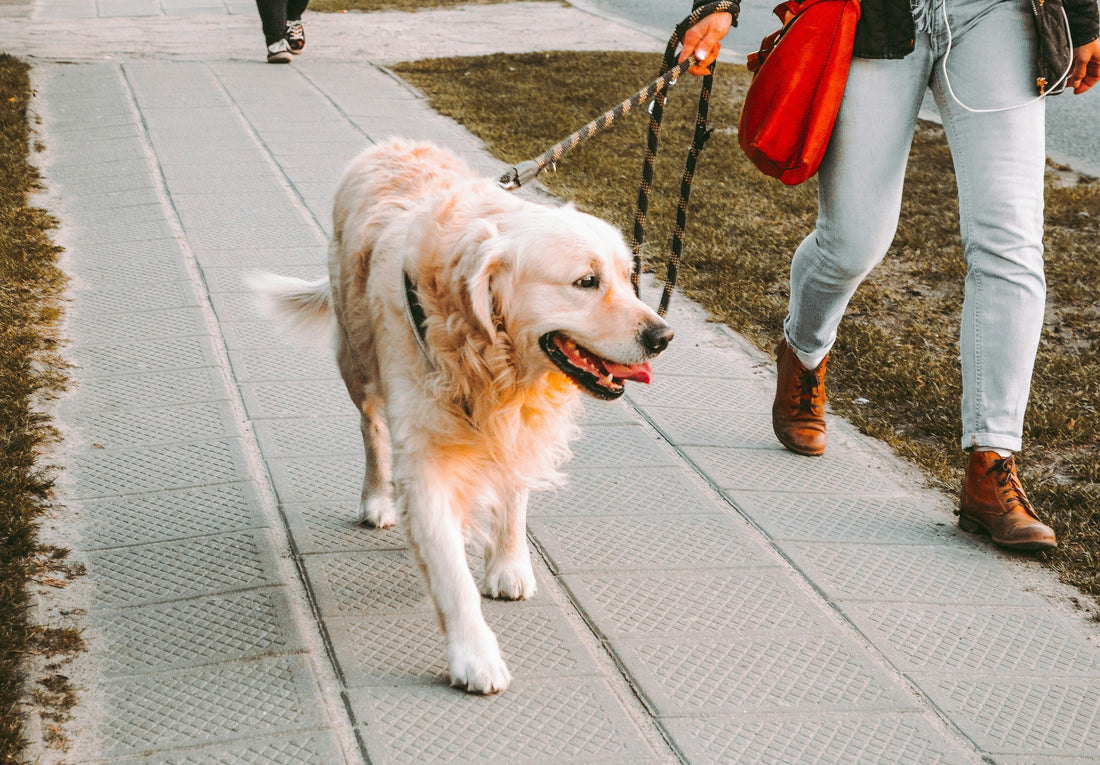
Why Dogs Pull On Leash, How Food Plays A Role, And A Simple Plan To Train Calm Walks
Pulling on leash is common, and it is not a moral failing in the dog. It is a mix of natural movement, big outdoor emotions, and a history of small rewards that stack up over time. Understanding those parts makes training feel kinder and more predictable.
Why dogs pull in the first place
Movement pays.
When a dog leans into the leash and the world moves closer, that forward motion feels like a win. Parks, scents, trees, and people arrive faster. The pull is rewarded by the environment.
Gait and body mechanics.
Dogs are four wheel drive. Leaning into pressure is built into how they stabilize and sprint. Many breeds were selected to work into resistance, so leash tension can feel normal to them.
Sensory overload.
Outside is loud for a dog nose and ears. Wind, traffic, birds, distant dogs, food smells from a cafe, all at once. Excitement rises and fine motor control drops, which makes careful walking harder.
Reinforcement history.
Each time a tight leash still leads to the grass or the greeting, the pulling habit gets a little stronger. It is not one big decision, it is hundreds of small successful pulls.
Health and comfort.
Pain, long nails, gut upset, or an ill fitting harness can raise frustration and urgency. Sudden changes in pulling deserve a chat with your vet.
Where food fits into leash behavior
Food sits at the crossroads of biology, emotion, and learning. It can calm, excite, distract, or motivate, depending on timing and context.
Meal timing and arousal.
A heavy meal right before a walk can make some dogs sluggish and others more restless. Light and predictable meals support calmer walks. A small gap between feeding and walking often helps focus.
Satiation and interest.
A dog that is very full may ignore treats, a dog that is very hungry may snatch and lose patience. Comfortable hunger, never deprivation, keeps food meaningful without stress.
Treat value.
Soft, moist foods are usually more interesting than dry biscuits. Value needs to match the environment. Busy streets ask more of the dog than a quiet hallway, so the currency that holds attention tends to be richer.
Placement of food.
Where food appears shapes where the dog wants to be. Rewards that arrive by the handler’s leg encourage that position to feel worth keeping. Rewards that drop ahead can accidentally invite towing.
When food seems to fail.
If a dog will not eat outside, that usually points to stress, not stubbornness. Lower intensity settings, more space from triggers, and time to decompress often bring appetite back. Once the emotional state improves, food becomes useful again.
Food and sniffing are not rivals.
Sniffing reduces arousal and gives information. Many teams use food to teach patterns, then let sniffing become a natural reward for staying composed. The two work well together.
Gear and the leash conversation
Equipment does not teach skills on its own, yet it shapes the conversation.
Front clip harness.
This changes the physics of pulling by turning the chest back toward the handler when tension appears. It avoids pressure on the throat and helps keep the leash loose with less effort.
Leash length and feel.
A fixed leash in the two meter range gives clear feedback and room to move. Elastic sections can soften small mistakes. Retractable leashes make a constant pull the default, which can confuse the lesson of slack equals progress.
Fit matters.
Straps should sit flat and allow shoulder movement. A poor fit can make any tool feel unfair.
Training, without the how to
A few ideas sit under every good leash plan, even before you look at drills.
Reinforcement beats restraint.
The behavior that gets rewarded grows. If loose moments lead to progress, access, and praise, dogs choose those moments more often.
Fairness first.
Distance from triggers, predictable routes, and clear boundaries make learning easier. Dogs that feel safe can think. Dogs that are overwhelmed cannot.
Clarity.
Consistent words, consistent leash handling, and consistent rules about greetings keep the picture simple. Mixed messages slow everything down.
Short sessions.
Concentration is a resource. Brief, frequent walks in easier places build the habit faster than occasional marathons in chaos.
Generalization takes time.
A dog that walks nicely on a quiet path still needs practice near cafes, buses, and skateboards. The skill spreads as the dog collects calm experiences in new places.
Food myths to retire
-
Food is not a bribe. It is payment for work that you want repeated.
-
Using food does not mean you will need it forever. Once the pattern is solid, real life rewards like sniffing and forward motion take over much of the job.
-
A dog that will not eat outside is not being difficult. That dog is telling you the world feels too big right now.
What success looks like
Calmer starts to walks. Longer stretches of slack leash. Easier passes by people and dogs at a distance your dog can handle. A dog that checks in on their own because that is where the good stuff happens. None of that is flashy, and all of it is progress.
Final thought
Pulling grows from normal dog needs, big feelings, and many tiny wins for the behavior. Food helps you tip the scale toward a different habit. Pair sensible gear with thoughtful rewards and a plan that respects your dog’s emotions, and loose leash walking becomes a realistic goal.
If you want the hands on coaching, drills, and step by step routines, check out our separate Mini Leash Guide series, that comes with our Loonochi harness.
